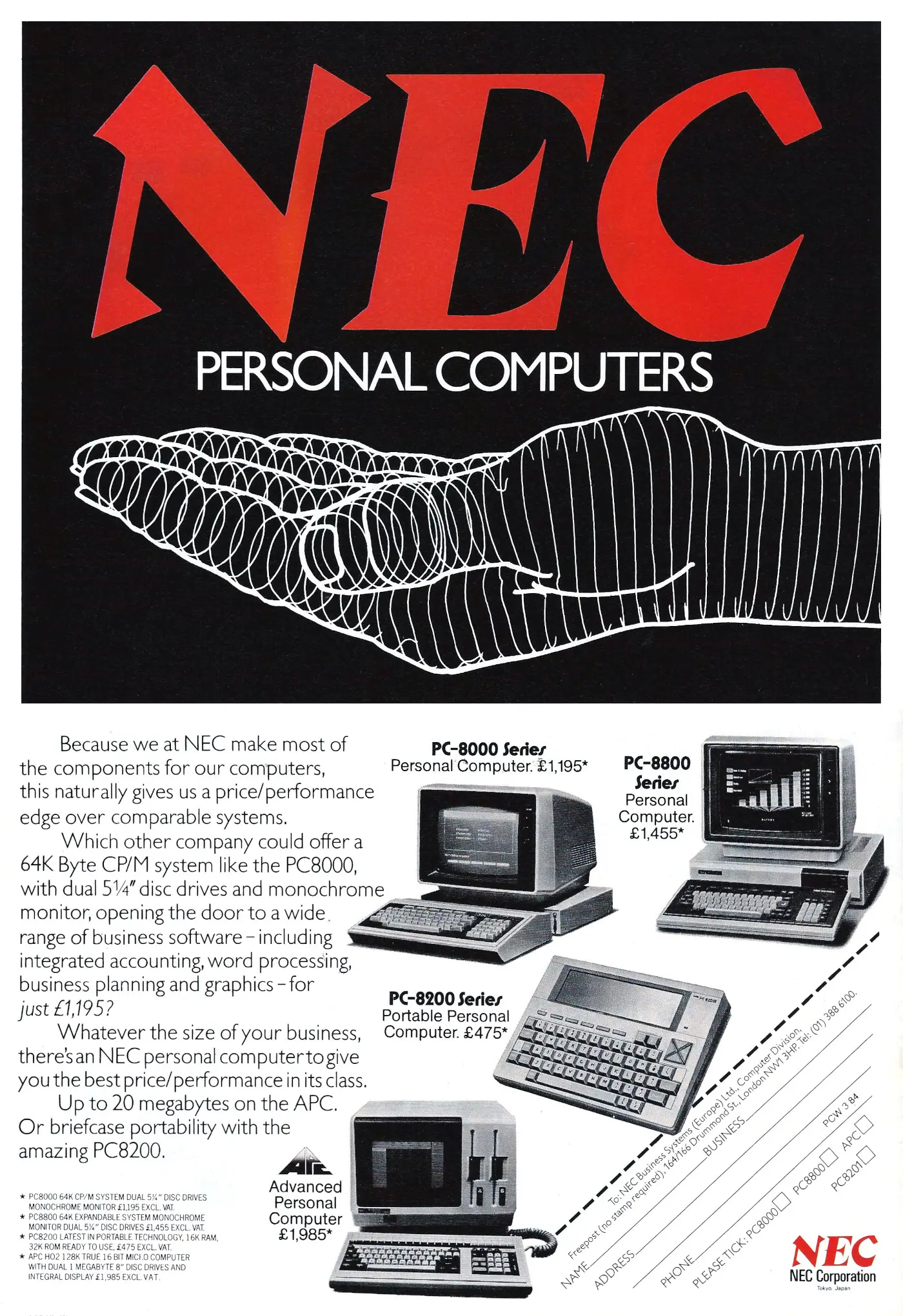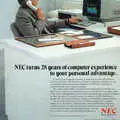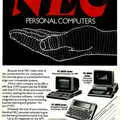
NEC Advert - March 1984
From Personal Computer World

NEC personal computers
NEC was another of those companies, like Texas Instruments and Commodore, that was vertically intergrated - in this case making the computers as well as - according to the advert - most of the components in them, including the CPU.
NEC's Intel CPU clones (presumably built under licence) found their way in to at least a few other computers at the time, including the Opus range of PCs.
NEC was founded in 1899 as the Nippon Electric Company in what was the first-ever Japanese joint venture with a foreign company - Western Electric Company of the US.
In an early corporate history very similar to that of Fujitsu, the company started out in telephones and telecommunications, before branching out in to computers as early as 1954[1].
NEC's PC-8000 series certainly seemed very well priced - the entry-level 64K CP/M PC-8000 model came with twin 5.25" floppies, a monitor and a bunch of software for £1,195 - about £5,040 in 2026. The similarly-specced Zen micro, from 1983, was around £1,610 in comparison.
The forerunner of the PC-8000 micro featured in the advert was the PC-6000, which NEC launched as a home micro in the US market at the beginning of 1983.
At the time it wasn't known whether the machine, which ran NEC's own Z80-compatible PD780C-1 processor with 16K ROM and 16K RAM, would make it to the UK, although Alan West, NEC UK's marketing manager suggested that they were "actively looking at it - there is every possibility we will launch it in Britain this year".
West continued "We see the PC-6000 at the Atari rather than Spectrum end of the market - if it goes on sale in the UK it will have a price around £400"[2]. This would have put it up against the BBC Micro, which seemed to be about the only machine on the market that could get away with such a high price for a home machine.
Date created: 17 October 2014
Last updated: 11 December 2024
Hint: use left and right cursor keys to navigate between adverts.
Sources
Text and otherwise-uncredited photos © nosher.net 2026. Dollar/GBP conversions, where used, assume $1.50 to £1. "Now" prices are calculated dynamically using average RPI per year.

